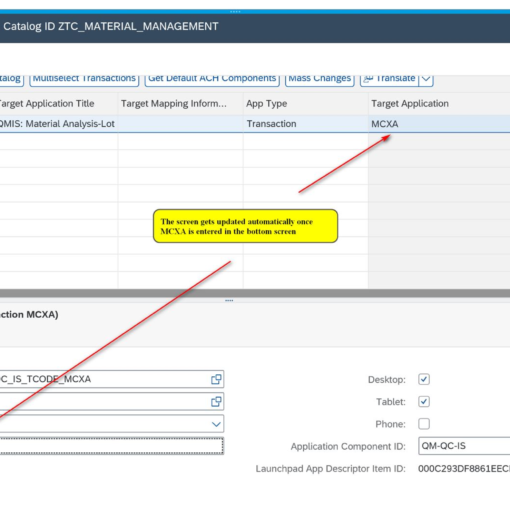SAP has had a remarkable journey from its humble beginnings as a small-scale software company to its current status as a multibillion-dollar international organization that oversees the everyday operations of thousands of clients. SAP has seamlessly incorporated cloud computing and given a world-class software framework for enterprise resource planning (ERP) for optimizing business procedures with the release of the SAP HANA database and its latest module SAP S/4HANA. SAP has successfully changed corporate operations by having numerous modules for cloud storage and ERP business based on business requirements.
The year 2020-21 ushered in a period of extraordinary technological change for both corporations and civilizations. In 2022, we expect to see these technologies scale up for wider and more synchronized adoption by businesses.
Let’s check out the 5 tech trends to watch out for 2022:
Digital Transformation
If one would have got the chance to pick up the winner during a pandemic, it was surely Digital Transformation. The pandemic has accelerated the rate at which digital is transforming enterprises profoundly. In many industries, what could have taken another decade or more was made possible immediately. This digital mandate isn’t new; the pandemic has merely thrown it into sharper light. Prior to the pandemic, the economy was already undergoing a paradigm change towards digitalization and servitization. The chaos induced by the pandemic has simply accelerated this drive, as is evident by the marked shift in organizational spending towards digital businesses. A McKinsey report indicates that organizations today are devoting more resources to their digital and technology capabilities, even if that requires cutting resources from other parts of the business – again a great indicator of the growing importance of technology to both strategy and operations.
Hyper-automation and Decision Intelligence
Hyper-automation is a very self-explanatory term. We’ve already used technologies like RPA to automate a number of operations. This trend of utilizing a systematic, business-driven strategy to automate as many business and IT tasks as feasible will continue in the future. Scalability, remote operation, and disruption of business paradigms are all achievable because of hyper-automation. Decision Intelligence is a practical method for improving organizational decision-making. In such a system, each choice or decision is the result of several process iterations that are refined using analytics and data intelligence. Decision Intelligence may support and enhance human decision-making and potentially automate it through the use of enhanced analytics, simulations, and AI, hence augmenting organizational processes to be more efficient.
Sustainability Tech
Technology serves as both a foundational enabler and a key multiplier for attaining sustainable development more quickly than would otherwise be possible. With the #GreenLine, forward-thinking firms are integrating sustainability as a third dimension to achieving corporate success, in addition to the top and bottom lines. It is now a strategic focus for CEOs. ESG is now factored into investment decisions. Consumers are making demonstrable adjustments to more sustainable products and services. Employees are also making career decisions depending on their employer’s environmental stewardship. As a result, it is critical to invest in innovation that takes into account natural resources while also promoting economic and social progress.
No-code & Low-code technologies
Graphic design, content development, and even website design have all been simplified to the point where users can build rich experiences by simply dragging and dropping items. As technology advances, no-code AI will be possible, allowing people to design systems by just “dragging and dropping” ready-made modules. Through simple interfaces, the “programming language” barrier will be removed, allowing users to create highly complex and robust AI systems. In other words, computer power will be democratized, allowing an infusion of people who may lack technical expertise but may create applications based on existing systems.
Total Experience (TX)
When we talk about Total Experience (TX), we’re referring to a comprehensive program that connects the customer, user, and employee experiences. As a result of the epidemic, firms must have a robust TX strategy. Its purpose is to improve customer happiness and employee productivity by giving everyone who interacts with your brand an extraordinary experience. Instead of working on each experience separately, businesses should focus on connecting them. Customers, users, and staff will all be happier as a result of working together as a team. As firms erase communication silos and create a uniform experience for their scattered workforces, this trend will continue beyond 2022.
What is the future of SAP?
Here are some key aspects that were shaping the future of SAP:
- Cloud Adoption: SAP has been placing a strong emphasis on cloud computing and SaaS (Software-as-a-Service) offerings. The company has been encouraging its customers to move from on-premises deployments to cloud-based solutions. SAP’s cloud platform, SAP Cloud Platform (SCP), provides a foundation for building and deploying cloud-native applications, integrating data, and utilizing cutting-edge technologies such as AI and IoT.
- SAP S/4HANA: SAP has been driving the adoption of its flagship ERP system, SAP S/4HANA. S/4HANA is an intelligent, in-memory ERP suite that offers real-time analytics, streamlined business processes, and improved user experiences. SAP has been encouraging its customers to transition to S/4HANA from older SAP ERP systems, as it serves as a foundation for innovation and supports SAP’s future direction.
- Intelligent Enterprise: SAP’s vision revolves around creating an “Intelligent Enterprise” that leverages advanced technologies like AI, machine learning, IoT, and analytics to enhance decision-making, automate processes, and drive innovation. SAP has been integrating intelligent capabilities across its product portfolio to help businesses become more data-driven and responsive.
- Industry-Specific Solutions: SAP has been expanding its focus on industry-specific solutions and offerings. By tailoring its products to meet the unique requirements of different industries, SAP aims to provide more value and better serve its customers.
- Business Technology Platform (BTP): SAP’s Business Technology Platform (BTP) provides a comprehensive suite of tools and services for application development, integration, analytics, and data management. BTP enables businesses to build custom applications, extend SAP solutions, and integrate with third-party systems.
- Partnerships and Ecosystem: SAP has been actively collaborating with technology partners, system integrators, and startups to create a vibrant ecosystem. This collaboration fosters innovation, accelerates product development, and expands the reach of SAP solutions to a broader audience.
- User Experience: SAP has been investing in improving user experiences across its products to make them more intuitive, mobile-friendly, and user-centric. The SAP Fiori design principles drive these efforts, aiming to enhance productivity and user satisfaction.
It is important to note that the future of any company, including SAP, is subject to changes in market dynamics, technological advancements, and customer demands. Therefore, SAP’s future direction may continue to evolve beyond my knowledge cutoff date. To get the most accurate and up-to-date information on SAP’s future, it is recommended to refer to official SAP communications, announcements, and financial reports.





